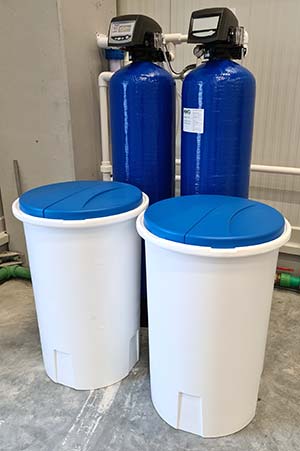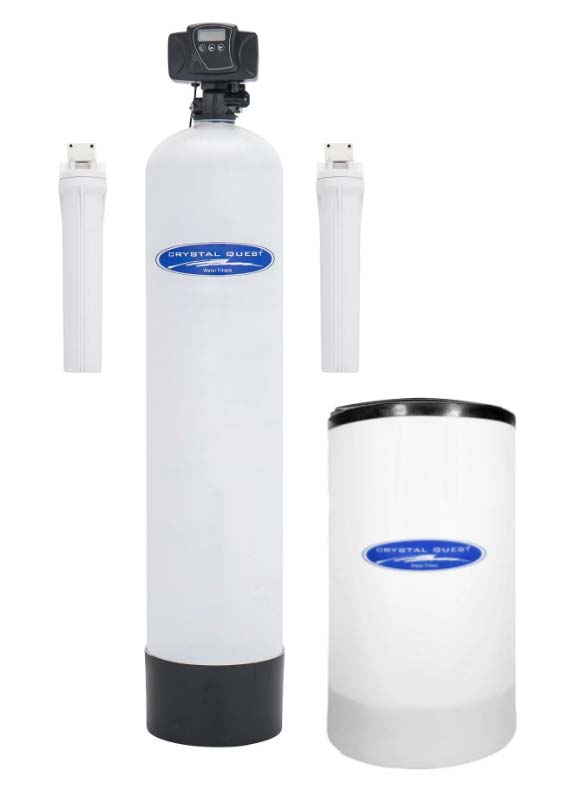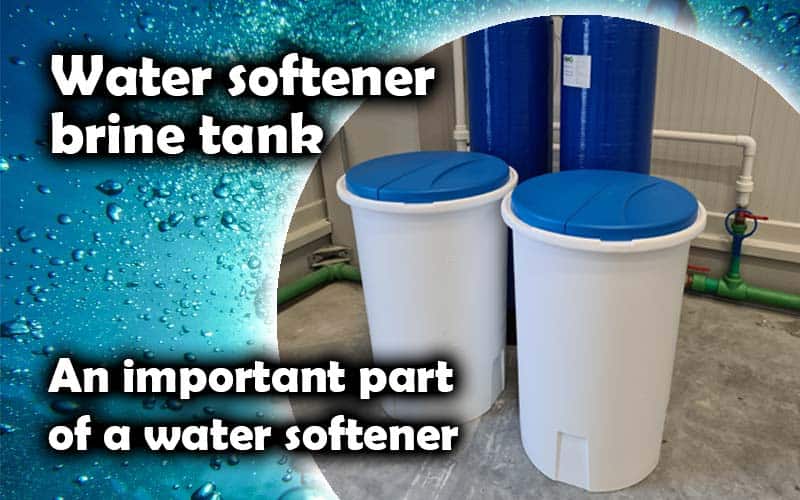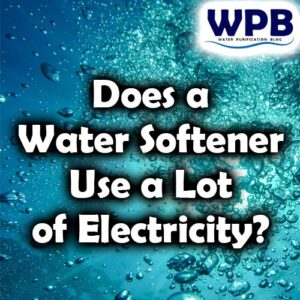Water softener brine tank – what is it?
Correct handling of the brine, as well as the quality of the tableted salt, is essential for the correct operation of the water softener.
Water softener brine tank is a very important element of water softening systems. It ensures a good regeneration and operation of a water softener.
Table of Contents
The main role of the water softener brine tank is to store tableted salt, which dissolves in water to form a salt solution that the softener uses to regenerate the ion exchange resin.
During regeneration, this solution is drawn through the softener over the injector built into the control valve. By slowly introducing the brine in contact with the resin, the ion exchange resin is getting regenerated. Read more about regeneration in our blog post.

Understanding Water Softener Brine Tanks
A water softener brine tank is a container that holds the tablet salt used to regenerate the water softener resin. The resin is a material that attracts and traps positively charged mineral molecules and replaces them with negatively charged molecules of sodium or potassium. The brine tank is connected to the water softener and is filled with a solution of water and salt.
The brine tank is an essential part of the water softening process as it allows the resin to regenerate and continue effectively removing hard minerals from the water. As the water softener resin attracts and traps mineral ions, it becomes saturated and can no longer effectively remove the minerals from the water.
The resin is then regenerated by flushing it with a concentrated solution of saltwater from the brine tank. The high concentration of salt ions in the brine solution causes the resin to release the trapped mineral ions and become recharged, ready to remove calcium and magnesium minerals again from the water.
Water softener brine tank elements
The water softener brine tank consists of the salt container itself with its lid, a salt grid plate (smaller brine tanks do not have one), a air check valve assembly with a float placed in the brine well (protective perforated tube) with a lid, and an overflow elbow.
The most important part of the water softener brine tank is certainly the air check valve assembly with the float. It ensures that the brine is replenished with water to the level determined by the float and prevents air from being drawn into the softener when all the solution is drawn from the tank.
When to add salt to the brine tank
Refilling the brine tank with tableted should be done when the level of tableted salt equals the water level after the regeneration cycle.
A small amount of tableted salt will not provide sufficient brine concentration for regeneration and will cause an early breakthrough of water hardness.
The basic rule is that the surface of the water must not be visible in the brine tank, but only dry tableted salt. This is the only way to ensure the maximum contact surface of salt and water and ensure the achievement of the maximum salt concentration.
Water softener salt problems
If the salt tablets disintegrate into a powdery form in contact with water, the brine tank should be drained immediately, cleaned thoroughly and filled with high-quality pressed tablet salt.
Tableted salt in brine must not disintegrate into powder in contact with water, but must maintain its tablet form until complete dissolution.
Water softener brine tank periodic maintenance
Periodic maintenance of the brine involves its complete emptying and complete cleaning of various deposits.
At the same time, special attention should be paid to the suction set, which needs to be dismantled, completely disassembled, cleaned all its parts, and then reassembled and connected to the flexible pipe that connects it to the softener.
The 3 most common water softener brine tank problems
The 3 most common water softener salt tank problem are:
- softener does not draw brine from the salt tank
- salt bridging – when a hard salt crust forms on the top of the salt tank
- salt mushing – when salt pellets fall apart and create a layer of powdered salt at the bottom of salt tank
Most often, the problem is about insufficient sealing of the flexible pipe that connects the softener with the brine tank. The pipe should be disconnected at both of its connections, shortened at both ends by 1/4″ and returned to its place by tightening the nuts by hand.
Do not use tools such as pliers.

Whole House Water Softener with Pre/Post Filters
Automatic whole house water softener
- 20” sediment cartridge that removes sediment, silt, sand, and dirt
- Ion exchange water softener, 48,000-grain capacity, service flow: 9-11 GPM
- 20” solid carbon cartridge for removing volatile organic carbon compounds (VOCs), insecticides, pesticides and industrial solvents
Crystal Quest has been in the water filtration industry for over 30 years. The company manufactures water filtration and softeners products to a worldwide market for residential, industrial, or commercial use.
The company makes reverse osmosis solutions, water conditioning, water treatment, industrial water filters that can be used in beauty salons, apartments, clubs, government complexes, etc.

Who am I?
I am working as a water treatment technical manager and I have more than 25 years of practical experience in water purification.
Water purification expert
After many years of experience in water purification, I want to share some of my knowledge and get people to know the real importance of water quality.
Water purification and water treatment are very complex themes, so it is important to explain them in an easy-to-read way.
On this blog, you will find many understandable, easy-to-read information about water purification.
I hope you enjoy it, find some useful information, and thank You for reading.
More info on my work and my expertise on water purification can be found on my LinkedIn profile.






